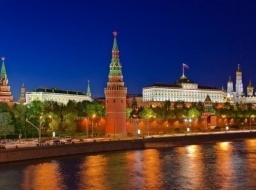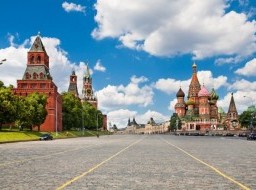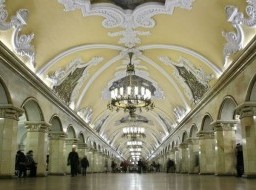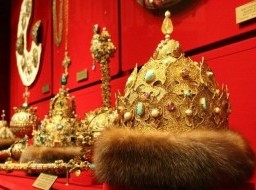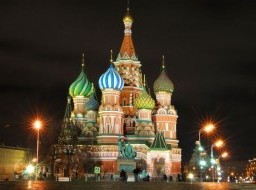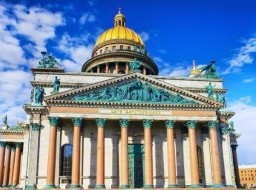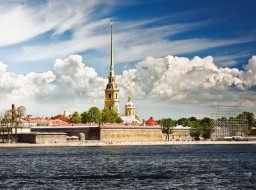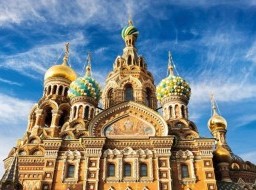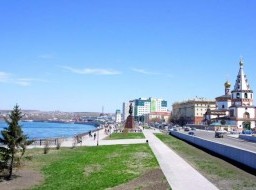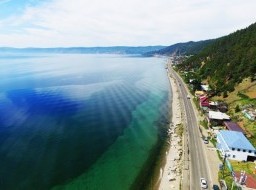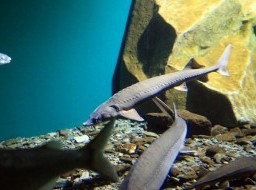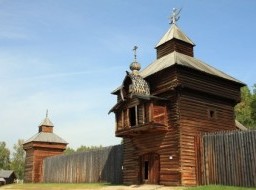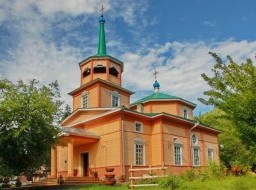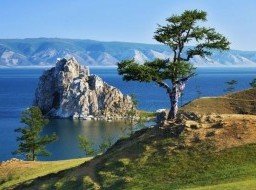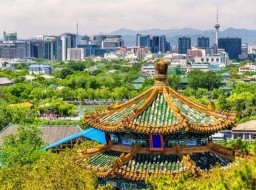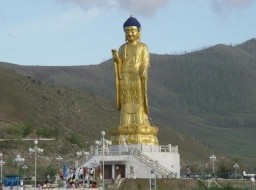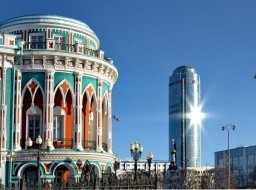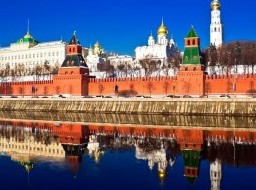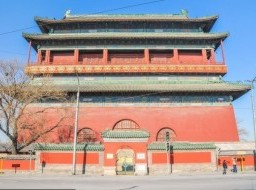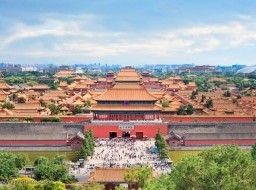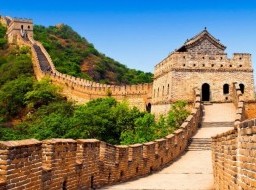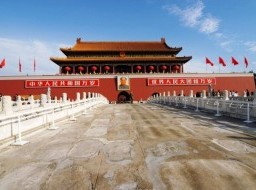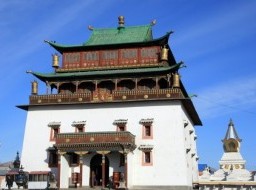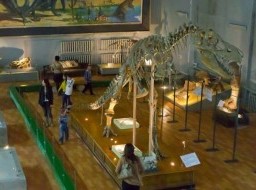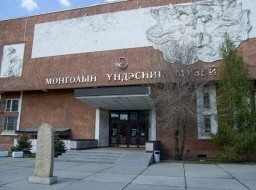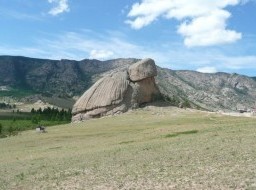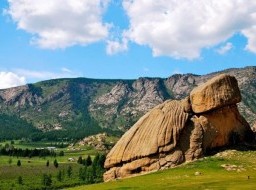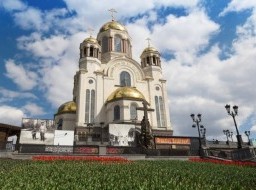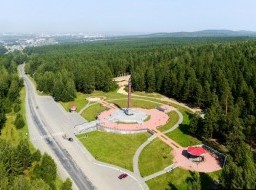Trans-Mongolian East-West: Beijing - Ulaanbaatar - Baikal - Yekaterinburg - Moscow - St. Petes
As the train eats up the miles on its journey west, we’ll explore pretty Lake Baikal and charming Irkutsk before heading to historic Yekaterinburg. A comprehensive sightseeing program in both Moscow and St Petersburg rounds off this unforgettable tour.
Itinerary Hide all details
Arrival in China. Exploring Old Beijing (Hutong Area)
After your arrival in Beijing, our driver will meet you at the airport and transfer you to the hotel. Once settled in, it’s off to a hutong, a 13th century neighborhood in the heart of the old city for a guided rickshaw ride through its narrow alleyways. Moving on to Shichahai Lake, we visit the interesting Drum Tower and have the option of a boat trip. There’s a lot of history in this part of the city, from the houses once the home of princes to atmospheric old courtyards.
Tiananmen Square. Forbidden City & Summer Palace
The Forbidden City houses the Imperial Palace, home of the emperor during the Ming and Qing dynasties. Undoubtedly, this will be a highlight of our sightseeing program today with its myriad ancient wooden structures which led to its designation as a UNESCO World Heritage Site. It stands at the edge of Tiananmen Square, the world’s largest city square, gaining notoriety in 1989 as the place where government troops dramatically ended a pro-democracy protest in front of the world’s cameras. Later in the day, we’ll make our way to the Summer Palace, in a beautiful lakeshore setting at the edge of the city.
Badaling Great Wall. Visit to the Olympic Green
Stretching for thousands of miles and over two thousand years old, the Great Wall of China may not be seen with the naked eye from space but it is a sight to behold. The stretch at Badaling is closest to Beijing and was also the first to be restored. As you walk on the wall, you can only imagine what life would have been like at the time of its construction. Moving rapidly through the centuries, we arrive at the Olympic Green to see the buildings erected for the 2008 Summer Games including the famous Bird’s Nest Stadium.
Departure to Mongolia
We board the fast train K3, popular with foreign travelers to get from China to Mongolia. You can choose from two-berth first class compartments or four-berth second class carriages. Hot boiled water is available in both parts of the train and carriage attendants provide thermos kettles if required. The train has a dining car and a bar where food and drink can be purchased for reasonable prices.
Arrival in Mongolia. Enjoy Terelj National Park
Our guide will meet you at Ulan Bator railway station to transfer you to Terelj National Park. On the way, we make a scheduled stop at the enormous statue of Chinggis Khaan on horseback, featuring 36 columns representing the 36 khans from Genghis to Ligdan Khan. You can walk to the head of the horse to enjoy a panoramic view of the surrounding landscape. Moving on to Terelj, we marvel at the dramatic Mongolian landscapes. A stop at Turtle Rock is a must before we pay a visit to a nomad family who will show us how to milk a cow and prepare dairy products. Depending on the season, we’ll either overnight in a traditional felt ger or a cozy wooden lodge.
Ulan Bator City Tour. National History Museum
Our driver will meet you at your accommodation to take you back to the city. A guided tour of Ulan Bator will follow, giving you to opportunity to explore Gandan Hiid Monastery, the country’s largest remaining monastery, Sukhebaatar Square and the Museum of Natural History, home to authentic dinosaur remains found in the Gobi desert.We’ll also go to the National Museum of Mongolian History, one of the leading museums in Mongolia displaying Mongolian cultural heritage.
Departure to Russia
We return to the railway station to begin our long-distance journey to Russia by comfortable train.
Lake Baikal
Our driver will be waiting at Irkutsk station to take you the 70km or so to Lake Baikal, where our base will be the pretty village of Listvyanka. There, you’ll have free time to enjoy the village amenities or perhaps take a boat trip on the lake.
At Leisure at Baikal
Today is another opportunity to savor free time in Listvyanka village. We suggest a visit to the St. Nicolas Russian Orthodox Church and the Baikal Lake Museum where you will learn Siberian traditions, history, flora and fauna of the deepest freshwater lake in the world.
Wooden Architecture Museum in Taltsy. Exploring Irkutsk. Departure to Yekaterinburg
Our guide will meet you at your accommodation for your return transfer to Irkutsk. On the way, we will stop to visit the open air Wooden Architecture Museum in Taltsy, located in a picturesque forest on the bank of the River Angara, the setting for a large collection of historic wooden houses, a 15th century watchtower and a Shaman yurt. Here, you’ll learn about the traditional way of life of the Buryat and Evenk people. Returning to the city, we will admire Irkutsk’s varied architecture including its quirky log houses.At the end of the day, we’ll transfer you to the railway station for your long-distance train to Yekaterinburg.
Onboard
Arrival in Yekaterinburg. Transfer to the Hotel
Two days later, we’ll arrive at Yekaterinburg station where our driver will be waiting to meet you at the carriage. Transfer to the hotel.
Ganina Yama & Cathedral on the Blood. Europe-Asia Border
Yekaterinburg was the place of execution of the last Russian tsar Nikolay II and his family and we will visit the Memorial Cathedral on the Blood in the name of all Saints, which was built on the site to commemorate events. We’llcontinue to Ganina Pi,a unique orthodox monastery and visit seven wooden churches in the heart of a centuries-old pine forest. Later we’ll make an excursion to the obelisk marking the boundary between Europe and Asia. According to an old tradition, tourists drink a glass of champagne on this place and take it home. On the way to the borderline, we can stop for a visit to the Memorial honoring the victims of Stalin’s repressions of the 1930-1950s.
Departure to Moscow
Our driver will meet you at the hotel lobby with a sign board and transfer you to the railway station.
Exploring Moscow. Red Square, St. Basil’s, Lenin Mausoleum
On arrival in Moscow, our driver will meet you with a sign board on the platform. After your transfer to the hotel, take a walking tour through the center of Moscow, taking in important sights like Lubyanka Square where the KGB was based in Soviet times, the Bolshoi Theatre and Tverskaya Street, Moscow’s equivalent of London’s Oxford Street. We’ll find ourselves in Red Square, where we’re sure you’ll be wowed by the colorful domes of St Basil’s Cathedral. In the square, we can visit GUM department store, Lenin’s Mausoleum and Kazan Cathedral.
Kremlin & Armoury. Departure to St. Petersburg
Today we focus on the Kremlin. Beginning in Cathedral Square, we move on to the Armoury Museum. Its fabulous array of treasures includes such exhibits as the chalice of Yuri Dolgorukiy, the helm and armor of Boris Godunov, a collection of over fifty Faberge eggs, as well as golden and silver works of applied art by Russian, European and Oriental masters, invaluable weapons and other works made of precious metals and stones. Lastly, we’ll dip underground to see the glitz and glamor of Moscow’s famous metro. Unlike other city transit systems, this one features adornments of marble, mosaics, stained glass panels and bronze sculptures and has to be seen to be believed. Afterwards, our driver will transfer you from the hotel to the train station to take you to St Petersburg. We’ll be traveling on the Grand Express, with a choice of standard first/second class accommodation or a special luxury carriage where you’ll travel in style with toilets, showers, air-conditioning, comfy sofas, LCD TV, DVD-players and Wi-Fi.
St. Petersburg City Tour
After arriving in St. Petersburg, our driver will meet you with a sign board on the platform. After transferring to the hotel, we’ll take a sightseeing tour of this beautiful city, one with a calm and unhurried pace in stark contrast to bustling Moscow. Our guide will reveal the city’s highlights, including the Peter and Paul Fortress, St. Isaac's Cathedral, the Church of Christ's Resurrection (The Saviour of the Blood) and the famous cruiser Aurora.
Yusupov Palace
The Yusupov Palace is the setting for today’s guided tour. It once belonged to the noble family of Prince Yusupov and is considered to be one of the most beautiful palaces in St. Petersburg.During the tour you will see the lavishly decorated 19th Century interior: murals, carvings, marble, mirrors, gilded chandelier, expensive silk clothes and refined furniture. This elegant palace hides a dark secret, however. Its cellar was the location of scandalous Rasputin’s murder.
Hermitage Museum
Amongst St Petersburg’s myriad museums, the Hermitage stands out by a mile, an architecturally stunning building housing an enormous collection of the art world’s finest works, including those by Leonardo Da Vinci, Titian, Raphael, French impressionists, sculptures and treasures icons, coins and Tsar’s jewelery. We think you’ll agree, the Hermitage is an unforgettable place to visit and the perfect place to round off this epic tour.
Departure for the Airport
Our driver will meet you with a sign board at the hotel lobby to take you to the airport for your return flight.
What's included
- Accommodation
- Breakfasts in the hotels
- Full-board in Mongolia & China
- Train travel (overnight)
- Guided tours & entrance fees
- Airport & railway transfers
- Personal travel insurance
- Optional excursions and services
- Meals on the train
- Optional excursions
- 1st class train upgrade
- Theatre and circus tickets
Single supplement - $375
Solo supplement - $875
First Class train upgrade - $695
- Single supplement goes towards single room (cabin for cruises) accommodation.
- Solo supplement is payable in the unlikely event when you are the only person on the tour. It will be refunded if other people join the same tour.
Price
| Price package | Price per person | |
|---|---|---|
Excluding flightsPrice per person | Book now |
Tour Reservation
Ready to buy? To complete your purchase, please select travel dates, travelers and click Purchase button.
Contact us
Just browsing or have a question? We will be happy to assist! Send a message to one of our awesome destination specialists.
Email usJust browsing or have a question? We will be happy to assist! Send a message to one of our awesome destination specialists.
Back to bookingVisa
Russian visa support (Russian visa invitation letter) is included.
Sights included in program
Thanks ! We will reply you in less than 24 hours (usually within 1-2 hours).
Thanks ! We will reply you in less than 24 hours (usually within 1-2 hours).
Our flexible payment options allow you to pay 20% of a deposit first and the remaining 80% in 14 days prior to your tour date - payment can be done both online or over the phone. This gives you the peace of mind knowing your spaces are booked on the tours and that you do not miss out on making the most of your time in Russia.
Also you get the best, top-rated and most experienced and knowledgeable hand-picked tour guide appointed on a priority basis.
In our experience, exceptional travel experiences are almost always delivered by exceptional people. With that in mind, we utilize a comprehensive approach to select and employ the best tour guides only. Multilingual and well travelled, each possesses deep insight into the diverse attractions and cultural patterns throughout the region. With us guides undergo a rigorous selection process, achieving outstanding knowledge of local culture and language. Rest assured that the best tour guides only will be working on the tours to give you excellent opportunity to explore the best of the sights during both short and long-term stay in Russia.
Speak to an expert
Call us now
+1 (888) 845-8877
- Home
- |
- Tours
- |
- Day tours
- |
- Rail tours
- |
- Shore excursions
- |
- My trip
- |
- About
Group Tour Packages
Company Information
US office
3422 Old Capitol Trail Suite 1252,
Wilmington DE, 19808 USA.
US toll-free: 1-888-845-8877
Russian office
Ligovsky pr. 57, Office 19,
191040, St. Petersburg, Russia
tel: +7-812-309-5339
© 2001 – 2024 by Northern Crown, Ltd. uVisitRussia and uVisitRussia.com are registered trademarks. Terms & Conditions Privacy Policy
Why Do You Need Our Travel Expert
Contact our experts, and they will help you to plan your best trip to Russia, with attention to every detail!
Our Experts have been in the travel industry for many years, guarantee to offer first class customer service, excellent value for money and unbiased advice. They are standing by to find and build your dream holiday to one of the world's most fascinating destinations - Russia.
Your personal Travel Expert will guide you through each stage of the travel process, from choosing a program that fits you best to support during your trip.
Just tell us your e-mail, and we'll take care of everything!
Ask a Travel Expert 
Leave your phone number
Your tour request has been received. Thank you !
We have sent you the confirmation message to [email]
Please make sure that you receive this message (sometimes e-mail messages may go to the spam/junk mail).
If you did not get this message, it means you will not get message with the tours' selection as well. If you use a Yahoo!, Gmail, AOL or Hotmail, we recommend to add request@uvisitrussia.com to your address book.
We recommend to leave your phone number. If we will not heard back that you received the e-mail with the tours' selection, we will contact you by phone.
And you will not miss the best tour for you.
Thank you ! Your request for Travel Expert assistance has been sent. We will e-mail you within 1 hour.

